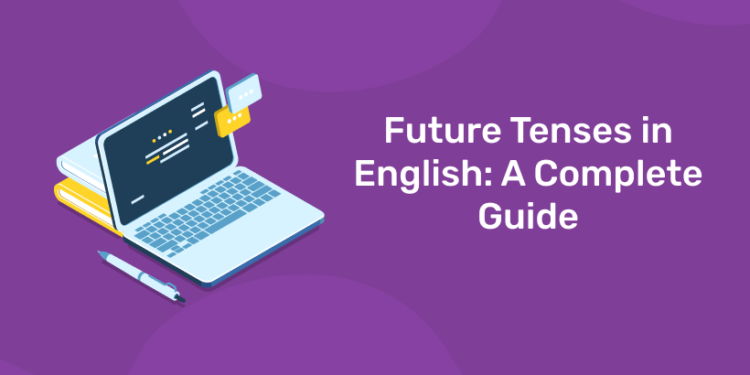Table of Contents
Introduction
Imagine planning a trip to a new city next year. You picture the sights, the food, and the adventures. English lets you talk about these plans with ease. Future tenses help express what will happen, what might occur, or what you intend to do. Many people struggle with them at first. This guide breaks it all down. By the end, you will handle future tenses like a pro. Stick around to see how these tools make your speech and writing sharp and clear. English speakers use future forms every day, from casual chats to business emails. Master them, and your communication stands out. The key lies in knowing when to pick each one. Get ready to dive in and boost your skills.
Understanding the Concept of Future Time in English
1: Which of the sentences below is grammatically correct?
English handles future time in unique ways. Unlike some languages with a single future tense, English mixes verbs and structures to point ahead. This setup gives flexibility but can confuse learners. Future time covers events after now, like predictions, plans, or promises. Think of it as painting a picture of tomorrow with words. Verbs shift to show intent or certainty. For example, a sudden decision differs from a set schedule. Context matters a lot here. Speakers consider the situation, evidence, and speaker’s view. A weather forecast uses one form, while a personal goal uses another. This approach lets English adapt to real life. People express shades of meaning, from strong confidence to light guesses. Grasp this, and future talk flows naturally. Practice spots patterns in daily use. Books, movies, and talks offer great examples. Over time, it becomes second nature. Future time isn’t just grammar; it’s about sharing visions and expectations. Use it well, and others follow your thoughts without effort.
English also blends present and future in clever ways. Some forms borrow from now to describe later. This keeps language lively and direct. Consider how habits or facts extend into tomorrow. Rules stay simple, but choices add depth. Learners often mix them up at the start. Patience pays off. Break it into parts: intent, evidence, and timing. Intent shows what you mean to do. Evidence backs up predictions. Timing sets when it happens. Each piece fits the puzzle. Native speakers do this without thinking. You can too with focus. Future time links past lessons to new goals. It builds on what you know. Start with basics and layer on details. This guide walks through each step. See how English captures time’s forward march. From quick chats to long stories, future forms keep it all connected.
Spoken English Course for Guaranteed Confidence and Career Growth
Spoken English Course by Entri App: Enhance your communication skills, gain certification, and boost your career with confidence.
Join Now!Types of Future Tenses (Will, Going To, Present Continuous, More)

Going to suits plans or intentions set before speaking. Evidence often backs it up. Picture packing a suitcase. “I am going to travel next week.” This points to arranged actions. Form it with am/is/are plus going to plus base verb. “She is going to buy a car.” Clear signs lead to this choice. It differs from will by showing preparation. Use it for near-future events with clues. “Look at those waves; the boat is going to tip over.” Prediction with proof.
Present continuous talks about fixed arrangements. Think schedules or meetings. “We are meeting friends at six.” This uses am/is/are plus verb-ing. It feels current but points ahead. Calendars and tickets often trigger it. “The train is leaving at noon.” Set in stone. Not for distant dreams; keep it for soon-to-come plans. It adds a sense of now to future talk.
More forms expand options. Future continuous describes ongoing actions later. “This time next year, I will be living abroad.” Use will be plus verb-ing. It paints a scene in progress. Good for polite questions too. “Will you be using the car tonight?” Softens the ask. Future perfect covers completed actions by a point ahead. “By 2030, we will have finished the project.” Will have plus past participle. Shows order in time. Less common but useful for timelines. Future perfect continuous adds duration. “In two hours, I will have been waiting for three hours.” Highlights length. These build on basics. Mix them for rich stories. English future types let you match exact meanings. Choose based on what you want to say.
Other helpers include shall for formal suggestions. “Shall we begin?” Mostly in questions. Modals like may, might, or could add possibility. “It may snow tomorrow.” Not pure future but related. Be about to signals very near events. “The show is about to start.” Urgent feel. These extras fine-tune talk. Practice spots them in context. Songs and news use them often. Build a list of examples. Soon, they fit right in.
How to Use Each Future Tense Correctly
Start with will. Use it for instant choices. At a store, “I will take the blue one.” No plan before. For predictions without proof, “The team will win the game.” Gut feeling. Offers and promises work too. “I will call you later.” Reliable. Add not for negatives: will not or won’t. Questions flip: Will you come? Short answers: Yes, I will. Keep base verb after.
Shift to going to. Plans made earlier fit here. “I am going to study tonight.” Decided already. Predictions with signs: “Those clouds mean it is going to storm.” Visible clues. Form with be verb plus going to plus base. Negatives: am not/is not/are not going to. Questions: Are you going to eat that? It stresses intent over chance.
Present continuous needs arrangements. Booked flights or appointments. “She is flying to Paris next month.” Ticket in hand. “They are playing tennis on Saturday.” Set time. Use for personal schedules. Avoid for weather or uncontrolled events. Negatives: is not playing. Questions: Is he coming? Feels active and near.
Future continuous for actions in progress later. “At noon, I will be eating lunch.” Midway point. Polite plans: “Will you be attending the event?” Less direct. Negatives: will not be working. Questions: Will she be staying? Good for overlapping events. “While you shop, I will be waiting here.”
Future perfect for done by then. “By Friday, I will have read the book.” Completion before a time. “They will have arrived by now.” Assumption. Use have plus past participle after will. Negatives: will not have finished. Questions: Will you have eaten? Ties two futures.
Future perfect continuous for length up to a point. “By summer, I will have been learning Spanish for a year.” Ongoing effort. Stresses time passed. “She will have been driving for hours.” Fatigue implied. Rare but powerful for emphasis.
Mix tenses in sentences for clarity. “I am going to the store, where I will buy milk.” Plan plus decision. Context guides choice. Listen to natives for patterns. Write sentences daily. Check with rules. Correct use builds confidence. Mistakes teach too. Keep practicing.
Common Errors with Future Tenses
Learners often confuse future forms because they overlap, but each has a specific role. Will is for decisions made on the spot or when there is no evidence, while going to is for predictions based on signs. For example, saying “It will rain” when dark clouds are visible is inaccurate; the correct choice is “It is going to rain.” A similar mistake happens with the present continuous. It should be used only for arranged events, not general predictions, so sentences like “It is raining tomorrow” don’t work for weather. Another issue is relying on will for everything. Plans usually take going to, and arrangements use the present continuous. Learners also forget contractions, which makes speech sound stiff; “won’t” is more natural than “will not.”
Some mistakes come from mixing forms that look similar. Shall appears formal and is rarely needed today, except in polite questions like “Shall I open the window?” Time words also cause confusion. A sentence like “Tomorrow I go to school” needs a helper verb; English doesn’t form the future with the simple present unless referring to fixed schedules such as “The bus leaves at eight.” Negatives and questions bring more errors. Learners sometimes say “I not will go,” but the correct order is “I will not go.” Questions must invert the subject and verb, so “You will come?” should be “Will you come?”
Advanced forms create extra problems. Some learners use the future perfect when a simple future is enough, which makes sentences feel overly complicated. Others add continuous forms where no progress is implied, such as “I will be go,” which is incorrect. The best approach is steady practice. Reading sentences aloud, checking for mismatched forms, and correcting them one at a time helps build clearer, more natural future expressions.
Spoken English Course for Guaranteed Confidence and Career Growth
Spoken English Course by Entri App: Enhance your communication skills, gain certification, and boost your career with confidence.
Join Now!Best Practices for Choosing the Correct Future Form
When choosing a future form, start by looking at the evidence. If the signs clearly show what will happen, use going to. If there are no clues, will is the better choice. For fixed arrangements, the present continuous works well. Consider the timing too: use the future continuous for actions that will be in progress at a later moment, the future perfect for actions completed by a certain time, and the future perfect continuous when you need to highlight duration.
Match the form to the speaker’s intent. Use will for promises or quick decisions, and going to for plans that are already formed. Context also matters. In more formal situations, you may choose shall, though it is less common. To build accuracy, practise small tasks: create scenarios, choose the correct forms, and ask yourself why each form fits. Grouping similar uses—like all prediction forms together—helps patterns become clearer.
Exposure strengthens instinct. Read different types of writing, such as news reports for predictions and diaries for plans. Write short future-focused journal entries and review your choices. Listen to podcasts and notice how speakers use future forms naturally. Use occasional quizzes from books or online sources, and vary the forms in your own writing to avoid repetition. Over time, choosing the right future form becomes more intuitive.
Conclusion
Future tenses open doors in English. They let you share plans, predictions, and promises with precision. From will’s quick decisions to going to’s solid intentions, each form adds value. Present continuous handles schedules, while advanced ones like future perfect show timelines. Avoid common mix-ups by checking evidence and context. Best practices build strong habits through practice and review. Master these, and your English shines in any setting. Keep using them daily. The payoff shows in clear, engaging talk and writing. English future talk equips you for tomorrow’s conversations today.
Spoken English Course for Guaranteed Confidence and Career Growth
Spoken English Course by Entri App: Enhance your communication skills, gain certification, and boost your career with confidence.
Join Now!Frequently Asked Questions
What is the real difference between “will” and “be going to”?
Many students learn that “will” is for predictions and “be going to” is for plans, but the truth is more useful. Use “will” when you decide something at the exact moment of speaking or when you make a prediction without clear evidence right now. Example: You look out the window and say, “It will probably rain this afternoon” (no dark clouds yet, just a feeling). Use “be going to” when a plan already exists in your head before you speak or when you see clear evidence in the present moment. Example: The sky is black and thunder is loud, so “It’s going to rain in five minutes.” Another example for plans: “I bought the tickets yesterday, so I’m going to visit my sister in July.” The plan was made earlier. Remember: if evidence is visible right now or the intention was formed before speaking, choose “be going to.”
Can I use the present continuous for things that are not 100% fixed?
Yes, but only if the arrangement feels very close and personal. Native speakers use the present continuous (“I’m meeting John at 7”) when something is already in the calendar, tickets are bought, or both people agreed. If the plan is still vague or one-sided, switch to “going to” or “will.” Wrong: “I’m visiting Japan next year” (too far, nothing booked yet). Better: “I’m going to visit Japan next year” or “I will visit Japan next year.” The present continuous gives a strong feeling of certainty and nearness, so save it for real appointments and booked events.
Is “shall” still used in modern English?
Very little. Most native speakers never use “shall” in normal conversation. The only places it still lives are very formal writing and in questions when offering help or making suggestions with “I” or “we.” Example: “Shall I open the window?” or “Shall we start the meeting?” Even then, “Should I open the window?” or “Let’s start the meeting” sound more natural today. For all predictions, decisions, and promises, just use “will.” Forget “shall” unless you want to sound like a character from an old British novel.
When do I need the future continuous (“will be doing”)?
Use the future continuous in three main situations. First, to show an action that will be in progress at a specific time in the future: “At 8 p.m. tomorrow, I will be watching the football match.” Second, for polite questions about plans when you don’t want to sound too direct: “Will you be using the car tonight?” (softer than “Can I use the car?”). Third, to show two future actions happening at the same time: “While you are cooking, I will be setting the table.” It paints a picture of something ongoing instead of a single quick event.
How does the future perfect (“will have done”) actually help in real life?
It shows that one future action will finish before another future time or event. People use it more than you think in business, travel, and daily life. Examples: “By the time you wake up, I will have left for work.” “When the concert starts, we will have driven 200 kilometers.” “By December, she will have worked here for ten years.” It helps set clear timelines and prevents confusion about order. Without it, sentences can feel messy when two future points are involved.
Is it wrong to say “I will call you tomorrow” if I already decided yesterday?
No, it is not wrong. Native speakers often use “will” even for pre-decided plans in casual speech. “I will call you tomorrow” is perfectly fine, quick, and common. Using “I’m going to call you tomorrow” is also correct and stresses the prior intention, but “will” wins for speed and simplicity in everyday talk. Save “going to” when you really want to highlight that the decision was made earlier or when evidence is visible.
Why do news reporters say “The president is flying to London tomorrow” instead of “will fly”?
Because the trip is already arranged, scheduled, and official. Journalists treat fixed government or company schedules like present facts. The present continuous makes the event feel certain and already in motion. You can copy this style for any booked travel, meetings, or public events: “The train is leaving at 9:15,” “Apple is launching the new phone next month.” It sounds professional and confident.
Can I mix different future forms in the same sentence?
Yes, and native speakers do it all the time for clarity. Look at these natural examples: “I’m meeting Sarah at six, and then we will go to the cinema.” (arrangement + later decision) “By the time the movie starts, I will have eaten dinner.” (future perfect + simple event) “Next year, I am going to start university, so I will be living in a different city.” Mixing forms shows exact relationships between events and makes your English sound advanced and natural.
What is the biggest mistake intermediate students make with future tenses?
They try to follow strict rules instead of looking at the situation. English future tenses are less about fixed grammar rules and more about what the speaker sees, feels, and intends right now. Ask yourself three quick questions: Is there visible evidence right now? (→ going to) Is it a fixed arrangement with a time? (→ present continuous) Am I deciding or promising at this moment? (→ will) When students stop memorizing tables and start watching the context, everything clicks into place.
How can I practice future tenses so they feel automatic?
Talk about your real plans every day out loud. Record tomorrow’s schedule using all forms: “I’m seeing the doctor at ten, then I will probably do some shopping, and by evening I will have finished my homework.” Read news headlines and rewrite them in full sentences with correct forms. Watch one episode of a series with English subtitles turned on; pause and predict what characters will say next using future tenses. Write a weekly journal titled “Next Week I…” and force yourself to use at least five different future forms. Do this for thirty days, and choosing the right form becomes instant and natural.










